Key Takeaways
To get your social media app approved on the Apple App Store, make sure it complies with Apple’s guidelines, technical requirements, and design standards from the outset.
Understand Apple’s rules and common rejection reasons to ensure a smooth approval process.
Conduct rigorous testing, fix bugs, and focus on intuitive UI/UX to prevent delays and enhance user experience.
Implement Apple-approved design standards, privacy measures, and accurate metadata for faster approval.
Track analytics, update features regularly, and respond to user feedback to drive long-term engagement and growth.
Launch a well-prepared, stable, and compliant app with a clear design, functional features, and robust privacy protocols to maximize your approval chances.
Launching a social media app on the iOS Store can be an exciting yet challenging journey.
Millions of apps compete for attention, with over 2.2 million available on the Apple App Store in 2025 alone. To stand out, understanding the Apple Store’s guidelines and approval process is essential.
Many developers face delays or rejections simply because they overlook key requirements or fail to optimize their app for a seamless user experience.
So, how can you ensure a smooth launch? This guide will walk you through how to launch your Social Media app on the iOS Store.
It covers everything from pre-launch considerations and technical requirements to submission steps, common rejection reasons, and best practices for faster approval.
By the end, you’ll be equipped with the knowledge not just to get your app approved but also to set it up for success in the App Store ecosystem.
Things to Consider Before Launching a Social Media App on the iOS Store
Before moving into the technicalities of app submission, it’s important to focus on strategic elements that can influence whether your app gets approved or rejected.
Here are the key considerations:
► Understand Apple’s Strict Guidelines
Apple is known for maintaining one of the most rigorous app approval processes. You must carefully review the App Store Review Guidelines, which focus on user safety, data privacy, and quality assurance.
Missing out on compliance often leads to rejection. In fact, reasons why a Social Media app gets rejected over the iOS Store usually stem from incomplete privacy policies, misleading content, or non-functional features.
► Analyze Market Competition
Studying existing apps in your niche helps in identifying what works and what doesn’t.
For instance, creators who want to tap into community-driven platforms often look for Discord alternatives to find inspiration for features and engagement strategies.
Doing so helps you understand how niche communities thrive and what engagement mechanics resonate with users.
► Define Target Audience and App Objectives
Apple values apps that deliver clear user benefits. Define your audience segment early, whether your app is focused on professional networking, interest-based communities, or multimedia sharing.
A well-defined objective not only strengthens your chances of approval but also ensures long-term retention and growth.
► Align with Monetization and Compliance Standards
Think beyond launch: how will your app make money, and does it comply with Apple’s policies on subscriptions, in-app purchases, and data handling? A strong plan aligned with guidelines reduces future risks.
► Prepare for Long-Term Updates and Maintenance
Apple often updates iOS policies and technical requirements. If you’re not prepared for long-term support, your app risks falling behind competitors.
Setting a roadmap for regular updates and compliance will help sustain growth post-launch.
Moreover, researching the best social media apps at this stage gives you a benchmark of evolving user expectations, design trends, and features to integrate during updates.
Technical Requirements for Social Media App Submission on iOS Store
Before you even think about uploading your app to the iOS Store, it must meet Apple’s strict technical and compliance requirements.
Missing any of these standards is one of the fastest ways to face rejection. Below are the most important factors to focus on.
1. Ensure iOS Compatibility and Performance
Apple expects apps to run smoothly across its supported devices, including the latest iPhone and iPad models. If your app isn’t optimized for iOS frameworks or fails to meet minimum performance benchmarks, it risks rejection.
Always test thoroughly on multiple iOS versions and devices. This is an essential step in the process to launch your Social Media app on the iOS store successfully.
2. Optimize App Size and Loading Speed
Users today won’t tolerate sluggish apps. Apple requires apps to be lightweight and optimized for fast loading.
Heavy apps with unnecessary files or uncompressed images can result in negative user experiences and potential rejection. Think lean, optimized, and responsive before submitting.
3. Privacy and Data Compliance Standards
Apple takes user privacy very seriously. Your app must include a clear privacy policy, permission explanation, and strong data protection measures.
Apps that misuse sensitive data like location or personal information are often flagged.
Developers planning around social media app development costs should also factor in data compliance investments, such as encryption and GDPR alignment.
4. Proper Use of APIs and Integrations
Apple carefully reviews how third-party APIs, SDKs, and integrations are used. Avoid private APIs and ensure official Apple frameworks are followed.
For example, messaging and calling features should align with FaceTime and iMessage standards. Looking at Skype alternatives gives insight into how compliance-friendly integrations can help pass your social media app on the App Store.
5. Feature Completeness and Functionality
Apple won’t pass your social media app on the App Store if it appears incomplete or lacks core functionality. Your app should demonstrate a clear purpose and offer usable features from day one. A buggy, placeholder, or partially built app is a red flag.
To prevent this, consider best practices from similar platforms, whether you’re curious about how to create a social media app or want to add custom engagement elements.
6. Design Standards and User Interface
Apple’s Human Interface Guidelines set the bar for user experience. An intuitive layout, consistent design, and accessible navigation are non-negotiable.
Even a well-coded app may face rejection if its design is clunky or doesn’t match iOS design principles.
It’s always a good idea to learn from other platforms, like analyzing the cost to develop an app like MeWe, to understand how a polished UI/UX contributes to both user adoption and Apple’s approval.
7. Documentation and Metadata Accuracy
When preparing your app for submission, metadata plays a big role. Screenshots, descriptions, and categories must be accurate and reflect your app’s functionality.
Misleading information or incomplete documentation can cause delays or outright rejection.
This step is often overlooked but is crucial in the steps to launch your Social Media app on the App Store effectively.
8. Regular Testing and Bug Fixing
Testing is the backbone of technical compliance.
Apple checks stability, crash rates, and responsiveness. Submitting an app with unresolved bugs is one of the reasons why Social Media apps get rejected on the iOS Store.
Always run beta tests, collect feedback, and resolve performance issues before hitting “submit.”
9. Security Layers and Authentication
With rising cyber threats, Apple expects apps to have robust authentication methods such as OAuth, two-factor login, or biometric login.
Weak security frameworks not only hurt user trust but also create hurdles in approval. Embedding robust systems here also reduces obstacles down the road.
10. Subscription and Monetization Compliance
If your app includes in-app purchases, Apple requires you to use its official payment system. Hidden payment flows or bypassing Apple’s system will lead to rejection.
Ensure pricing and terms are transparent to avoid conflicts later.
Meeting these technical requirements isn’t just about avoiding rejection; it’s about building a foundation for growth.
Once your app is compliant with Apple’s standards, you’re not just improving your chances to pass your social media app on the App Store; you’re setting your app up for long-term success.
Think of it as an investment: aligning your app’s technical development roadmap with Apple’s ecosystem from the start ensures a smooth, successful launch.
Steps to Submit your Social Media App on the iOS Store
Apple’s App Store has a reputation for being strict, but with the right process, you can get your social media approved on the Apple App Store easily.
Here’s a detailed guide to follow when you’re ready to publish your social media app:
Step 1: Prepare Your App for Submission
Before diving into the technicalities, ensure your app is fully polished and ready. Apple pays close attention to app icons, screenshots, and descriptions.
Metadata must be accurate, and your privacy policies should be transparent. This is one of the most important ways to launch your Social Media app on Apple Store without unnecessary delays.
Step 2: Enroll in the Apple Developer Program
To publish on iOS, you need a developer account.
The Apple Developer Program requires an annual fee but grants you access to testing tools, beta distribution (TestFlight), and the submission portal.
Whether you’re a solo developer or running a business, enrolling is non-negotiable.
Step 3: Build and Archive Your App with Xcode
Using Apple’s official IDE, Xcode, create and archive your build. Ensure that the build is stable and free from crashes.
This step ensures your app meets Apple’s technical requirements. Skipping thorough build testing can easily lead to rejection.
For inspiration, consider what sets apart apps like Instagram. The cost to develop an app like Instagram often factors in advanced testing and optimization before submission.
Step 4: Upload Your App to App Store Connect
App Store Connect is Apple’s hub for app submission. Here, you’ll provide app information such as name, bundle ID, category, and contact details.
You’ll also upload screenshots, set pricing, and configure availability. Ensuring accuracy here helps your app stand out as part of the guide to launch your Social Media app on Apple Store efficiently.
Step 5: Fill Out Compliance and Privacy Details
Apple requires detailed information on how your app uses data. Be specific about permissions for location, microphone, camera, and user data. Misrepresentation here is one of the top rejection triggers.
Apps in the social media category are closely scrutinized, so honesty and clarity go a long way. At this stage, think about the future too; understanding how social media apps make money helps you align your monetization models with Apple’s guidelines.
Step 6: Set Up Pricing and Monetization
You must decide whether your app is free, paid, or subscription-based. Apple takes a percentage from in-app purchases, so plan your strategy accordingly. Transparency here not only improves approval chances but also builds long-term user trust.
If you’re aiming for sustainability, analyzing social media app development trends can provide insights into what revenue models are gaining traction.
Step 7: Submit Your App for Review
Once everything is complete, submit your app for Apple’s review. This process usually takes a few days, but may extend depending on the complexity of your app.
Apple checks compliance, security, design, and overall functionality. Patience is important, as rushing may lead to resubmissions.
Developers often ask, How to launch a Social media app on the iOS Store? The answer is to follow each of these steps carefully and avoid shortcuts.
Step 8: Track Review Status and Respond Promptly
After submission, you can track your app’s status in App Store Connect. If Apple finds issues, they’ll provide detailed feedback.
Respond quickly, make necessary updates, and resubmit. Keeping an open line of communication with Apple’s review team ensures smoother approval.
Some developers even explore Snapchat alternatives to study how similar apps navigated the App Store ecosystem successfully.
Step 9: Release Your App to the Public
Once you approve your social media app on the App Store, you can schedule or manually release it to the iOS Store.
Marketing efforts should be aligned with the release date to maximize visibility. Remember, approval isn’t the end; it’s the beginning of your app’s growth journey.
Step 10: Post-Submission Maintenance
After launch, monitor user feedback, crash analytics, and updates. Apple values apps that are actively maintained. Consistently updating your app will keep it relevant and ensure smoother approvals for future updates.
Following this, how to publish a Social Media app on iOS Store? Roadmap helps developers avoid unnecessary rejections and optimize long-term performance.
Submitting your app to the iOS Store might seem daunting, but once you understand the process, it becomes manageable.
By carefully following these steps, you’ll not only increase your chances of approval but also set a strong foundation for long-term success.
Treat this as your complete guide to launch your Social Media app on the Apple Store, structured, reliable, and compliant.
Common Reasons Why Social Media Apps Get Rejected on iOS Store
Even after careful planning and development, social media apps can face rejection from the iOS Store. Understanding the common pitfalls will help you avoid delays and improve your approval chances.
1] Non-Compliance with Apple Guidelines
Apple maintains strict rules for all apps, and social media apps are no exception. Violating content policies, misusing private APIs, or ignoring data privacy rules can lead to immediate rejection.
Developers often overlook small compliance details, but these can significantly impact approval. Ensuring adherence to guidelines is the first step in how to get your Social Media app approved on iOS Store? Successfully.
2] Incomplete or Buggy Features
Apps submitted with unfinished or unstable features are a major cause of rejection. Missing buttons, non-functional forms, or frequent crashes signal poor quality.
Thorough testing before submission is essential. Addressing social media app development challenges early in the process helps developers avoid these common errors and ensures a smoother review.
3] Poor User Interface and Experience
Apple emphasizes intuitive design and a consistent user experience. Social media apps with cluttered layouts, confusing navigation, or inconsistent elements often get rejected.
Following the Human Interface Guidelines and designing with iOS standards in mind is crucial to make your Social Media app approved on the App Store.
4] Privacy and Security Concerns
Privacy violations are a leading cause of app rejection. Apple requires clear consent for data collection, secure handling of sensitive information, and robust authentication measures.
Weak security protocols or unsecured user data will flag your app during the review process. Prioritizing social media app security not only prevents rejection but also builds user trust and long-term app credibility.
5] Misleading Metadata or Marketing Material
Incorrect or exaggerated app descriptions, screenshots, or promotional text can mislead users, which Apple strictly prohibits.
Ensure that all metadata accurately represents your app’s functionality. Even minor inconsistencies can lead to rejection.
Maintaining accuracy here not only helps build user trust but also improves your chances of passing your social media app on the App Store quickly and avoiding unnecessary resubmissions.
6] Inadequate Testing Before Submission
Beta testing is critical. Many apps fail because they haven’t been tested across devices, iOS versions, or network conditions. Apple looks for stability, smooth performance, and bug-free operation.
Developers should conduct extensive testing, collect user feedback, and resolve any crashes before submission. Proper testing mitigates why social media apps fail after launch and ensures smoother approval.
7] Other Common Rejection Triggers
Additional reasons include:
-
Copycat apps that lack originality
-
Broken external links or integration errors
-
Non-compliance with in-app purchase rules
-
Apps requiring excessive permissions without a clear rationale
Addressing these issues proactively can save weeks of re-submissions and reduce frustration.
Knowing the common rejection causes empowers developers to plan ahead. By focusing on compliance, testing, security, and user experience, you can significantly improve your chances of approval.
Following these steps is central to getting your Social Media approved on the Apple App Store. And ensures your app is positioned for success.
What to Do if Your Social Media App Gets Rejected?
Rejection is frustrating, but it’s not the end of the road. Apple’s review process is meant to ensure quality and security, and most rejections can be resolved with the right approach.
Here’s how you can recover quickly and improve your app’s chances of approval.
1. Stay Calm and Review Apple’s Feedback
Apple provides specific reasons for rejection in their Resolution Center. Read these notes carefully instead of rushing into fixes.
Understanding whether the rejection is due to technical bugs, design flaws, or policy violations will help you prioritize changes effectively.
Taking this step is the first answer to how to publish a Social Media app on the iOS Store? After rejection.
2. Fix Technical or Policy Issues
If the rejection highlights bugs, crashes, or misuse of private APIs, resolve them immediately.
Similarly, check if your app violates Apple’s guidelines around content, user data, or in-app purchases.
Correcting these mistakes not only gets you closer to approval but also strengthens your app’s long-term stability.
3. Focus on UI/UX Enhancements
Apple places heavy emphasis on user-friendly design. If the rejection is related to a confusing layout, cluttered navigation, or inconsistent design elements, refine your interface.
Aligning your app with iOS Human Interface Guidelines ensures smoother approval. This is also a practical step in how to design a social media app that users will actually enjoy.
4. Improve Metadata and Compliance
Inaccurate descriptions, misleading screenshots, or missing privacy policies are frequent rejection triggers.
Ensure all app store metadata is precise, compliant, and reflective of your app’s actual functionality.
Clear, truthful communication builds Apple’s trust and sets realistic expectations for users.
5. Conduct Thorough Testing Before Resubmission
Many apps get rejected because of crashes that appear during review but weren’t caught during development. Test your app on multiple iOS devices, network conditions, and OS versions.
Beta testing with real users helps uncover hidden issues. Testing also proves crucial in ensuring smooth performance once you move forward with how to publish your Social Media app on iOS Store? Confidently.
6. Strategize for Long-Term Success
Don’t just focus on fixing rejection points; think ahead. Apple appreciates apps with unique value propositions and sustainable growth plans.
Consider features, monetization strategies, and updates that align with your broader vision. If you’re planning bigger, this ties directly into how to start an online social media business successfully.
7. Highlight Core Value with Better Features
Apple favors apps that bring genuine value to users.
Enhancing your social media app features, such as secure login, personalized feeds, or real-time communication tools, will help your app stand out.
This not only improves approval chances but also boosts user adoption post-launch.
8. Resubmit Confidently
Once fixes are complete, resubmit your app with confidence. Include a detailed note to the review team explaining the changes made.
Demonstrating responsibility and attention to Apple’s feedback increases your chances of faster approval on the next attempt.
Best Practices to Get Faster Approval for Your Social Media App
The Apple App Store is known for its rigorous review process. However, following proven best practices can significantly reduce the time it takes to get your app approved.
By aligning with Apple’s requirements and optimizing your app from the start, you can make the approval process smoother and more predictable.
These strategies highlight the best practices to consider for launching your social media app on the iOS store in 2025.
► Understand and Follow Apple’s Guidelines
Apple’s App Store Review Guidelines are the foundation of a successful submission. Apps are often rejected for issues developers could have avoided by thoroughly reviewing these rules.
From privacy protocols to in-app purchases, Apple expects complete compliance. When exploring how to develop an app like Threads, developers quickly realize that aligning with Apple’s content policies, privacy standards, and community guidelines is essential for smooth approval.
Staying aligned with these standards ensures that your app has fewer hurdles during the review process and moves you closer to faster approval.
► Build a Strong App Foundation
Before submitting your app, ensure it is technically sound. Crashes, glitches, or incomplete features are red flags for Apple reviewers.
A strong app foundation with smooth navigation, minimal bugs, and an optimized backend increases credibility.
For instance, developers exploring how to create an app like WhatsApp often prioritize building a seamless, reliable infrastructure. One that can handle heavy user activity without interruptions. This approach reflects the kind of stability Apple looks for during its review process.
Following this approach is one of the most reliable ways to launch your social media app on the App Store successfully.
► Prioritize Security and Privacy
Data handling is a critical factor in Apple’s approval process.
Apps must clearly state their data usage policies, handle sensitive information responsibly, and request only the permissions they need.
Incorporating advanced authentication, secure logins, and encrypted data storage protects users and builds trust. Apps that prioritize privacy rarely face rejection delays.
► Focus on UI/UX Excellence
Apple places a premium on clean design and intuitive user experiences. If your app feels clunky or inconsistent, it risks rejection.
Following Apple’s Human Interface Guidelines helps developers craft seamless experiences that meet expectations.
Focusing on delightful design is part of the process that demonstrates how to launch your Social Media app on iOS Store effectively
► Leverage Thorough Testing
Testing is critical for catching issues before Apple does. Conduct beta testing across multiple devices, iOS versions, and network conditions.
Tools like TestFlight allow you to identify bugs and performance bottlenecks before submission.
Emphasizing social media app testing at this stage ensures that your platform runs smoothly, offers consistent performance, and delivers a polished user experience right from the start.
► Stand Out with Unique Features
Apple encourages innovation. Apps that simply mimic existing platforms without adding unique value often face more scrutiny.
Highlight distinctive features such as AI-driven feeds, advanced privacy tools, or creative content-sharing options. For example, while learning how to develop an app like Reddit, developers often emphasize community-driven discussion features that deliver real value and set their apps apart.
► Optimize Metadata and Store Presentation
Your app’s first impression comes from its App Store page. Ensure the description, screenshots, and preview videos accurately reflect functionality.
Avoid exaggeration and highlight core benefits clearly. This not only satisfies Apple’s standards but also builds trust with users, setting the stage for higher downloads post-launch.
► Plan for Scalability and Future Growth
Apple looks favorably on apps that show long-term potential. Planning regular updates, scaling your infrastructure, and preparing for new trends demonstrates that your app is future-ready.
For instance, developers exploring how to develop a messenger app like Botim often consider scalability as a critical factor.
Building with growth in mind ensures that your app can handle increasing user demands while maintaining performance and reliability.
Getting faster approval isn’t about shortcuts; it’s about preparation and quality. From robust testing to clean design and security-first development, these strategies will save time and effort.
Ultimately, following the best practices to consider for launching your social media app on the App Store is the most reliable path to building credibility with Apple and creating an app that users will love.
Post-Launch Optimization: Growing Your Social Media App on iOS Store
Getting your app approved is only the beginning; the real challenge lies in growing it post-launch. Continuous optimization ensures better user adoption, higher retention, and sustainable success.
Here are the best strategies to scale your social media app after launch and maximize its impact.
1] Track Performance with Analytics
After release, monitoring your app’s performance is crucial. Analytics tools help you measure downloads, daily active users, retention rates, and session durations.
These insights highlight what’s working and what needs improvement. Developers who regularly track performance are better equipped to make data-driven decisions that boost engagement.
2] Regular Updates and Feature Enhancements
Apple values apps that continue to evolve. Providing regular updates not only fixes bugs but also keeps your app relevant. Introducing fresh features aligned with user preferences increases satisfaction.
Apps that fail to adapt tend to lose visibility and ranking in the App Store. Thinking strategically about updates also helps if you’ve considered the cost to build an app like Bereal, since post-launch development is as important as initial creation.
3] Leverage User Feedback for Growth
App store reviews and user ratings are powerful indicators of success. Pay attention to feedback, especially recurring complaints or suggestions.
Acknowledging user input by implementing improvements builds trust and encourages loyalty. Responding promptly to user concerns also demonstrates your commitment to delivering value.
4] Plan Smart Monetization Strategies
A great product needs a sustainable revenue model. Whether it’s ads, subscriptions, or freemium models, your monetization strategy should balance profitability and user experience.
Poorly implemented ads or costly premium tiers can drive users away. Instead, test different approaches until you find what resonates best. A flexible model will serve you well as you scale your app.
5] Expand App Capabilities with Innovation
Users expect more than just basic networking features. Integrating personalization, AI-driven recommendations, or advanced content moderation can set your app apart.
Exploring innovation also opens new growth opportunities. For example, you could experiment with features that allow you to create an AI app extension of your social platform, offering users smarter and more tailored experiences.
6] Marketing and Community Building
A successful launch doesn’t guarantee long-term success; you need continuous promotion. Leverage social media marketing, influencer partnerships, and user referral programs to keep the momentum going.
Building a strong community around your platform drives organic growth and improves retention. Developers exploring how to create an app often find that community-building is the most effective way to scale user adoption over time.
7] Scale with the Right Tech Partnerships
As your app grows, scalability becomes critical. Working with experienced partners ensures your infrastructure can handle increasing user demands without downtime.
Collaborating with a reliable mobile app development company can also help you roll out advanced features, integrate new technologies, and stay ahead of competitors in the market.
Launching is only half the battle; continuous optimization is where long-term success lies. From analytics to updates, user engagement, and smart partnerships, every step helps sustain growth.
Keeping these strategies in mind is essential once you’ve learned how to launch a Social Media app on the iOS Store. And want to ensure it thrives in the competitive market.
Partner With JPLoft to Launch Your Social Media App Successfully
Bringing a social media app to life requires more than just coding; it demands strategic planning, seamless execution, and ongoing optimization. That’s where JPLoft steps in.
As a trusted social media app development company, we specialize in building apps that not only meet iOS Store standards but also deliver exceptional user experiences.
From design and development to launch and growth, our team ensures your app stays competitive in today’s dynamic market.
Ready to make your vision a reality? Connect with JPLoft today and take the first step toward launching your successful social media app.
Conclusion
Getting your social media approved on the Apple App Store can seem challenging, but understanding the process, adhering to guidelines, and implementing best practices makes it achievable.
From careful planning and testing to thoughtful UI/UX design and post-launch optimization, every step contributes to a smoother approval journey and long-term success.
By addressing potential rejection reasons and following actionable strategies, you can confidently navigate Apple’s review process and ensure your app stands out in a crowded marketplace.
With the right approach, your social media app won’t just get approved; it will thrive, grow its user base, and achieve sustainable success on the iOS platform.
FAQs
Ensure your app is fully tested, stable, and complies with Apple’s guidelines. Focus on clear UI/UX, accurate metadata, and proper privacy measures. Address any potential issues before submission to increase approval chances.
Approval times vary depending on app complexity and compliance. Simple apps may be reviewed within 24–48 hours, while more complex apps can take up to a week. Following Apple’s guidelines and testing thoroughly can help speed up the process.
Apps are often rejected due to non-compliance with Apple’s guidelines, buggy features, poor UI/UX, privacy violations, or misleading metadata. Ensuring stability, clear design, and proper permissions significantly reduces rejection risk.
Yes. Apple allows resubmissions after addressing the issues outlined in their feedback. Make necessary corrections, test thoroughly, and provide clear explanations in the submission notes to increase approval chances.
Yes. Enrollment in the Apple Developer Program is mandatory for submitting apps to the App Store. It provides access to essential tools, beta testing platforms, and the submission portal.
Follow Apple’s guidelines closely, conduct thorough testing, optimize your UI/UX, provide accurate metadata, and address privacy/security requirements. Planning and preparation are key to speeding up approval.





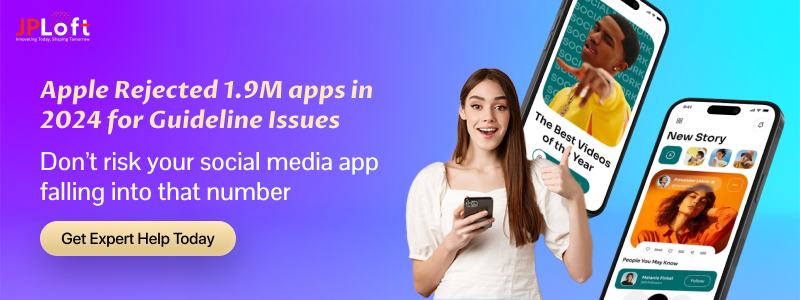
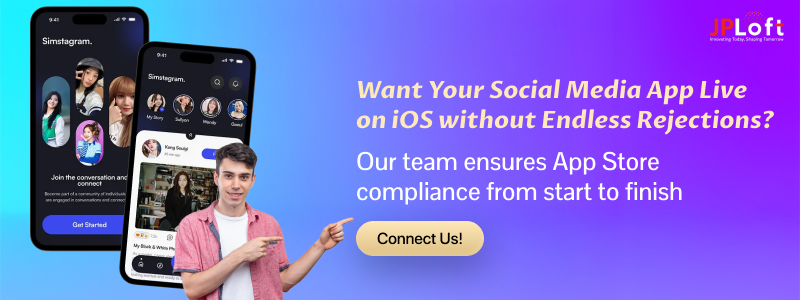

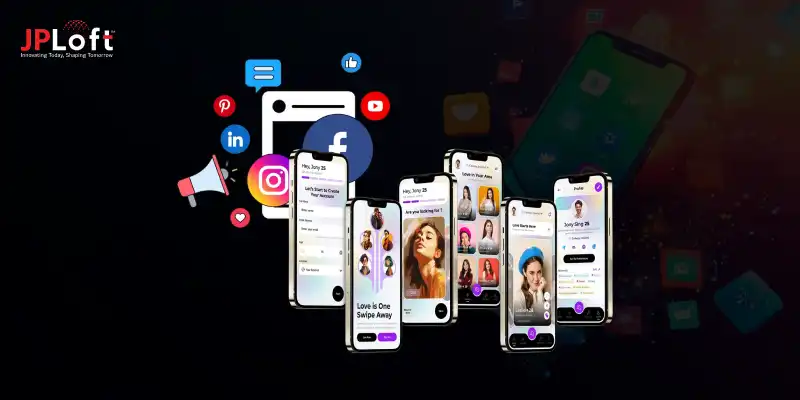
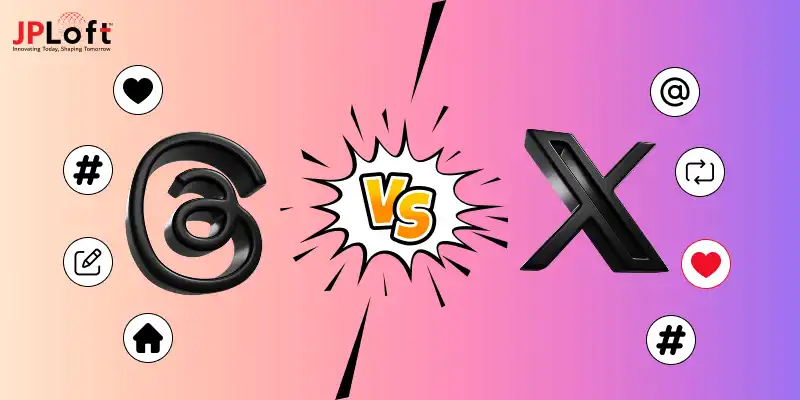
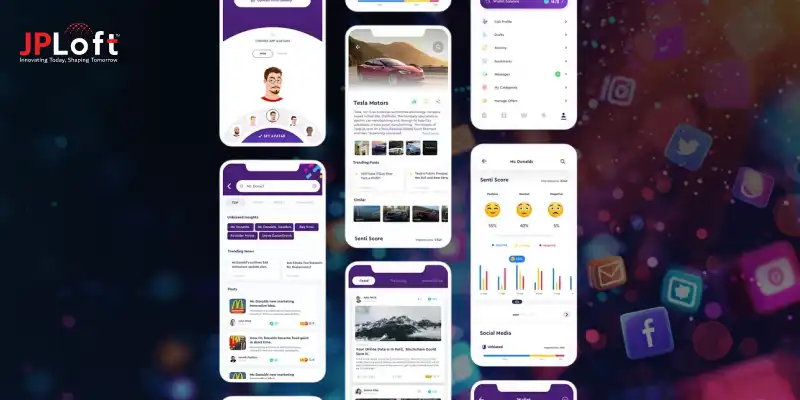


Share this blog